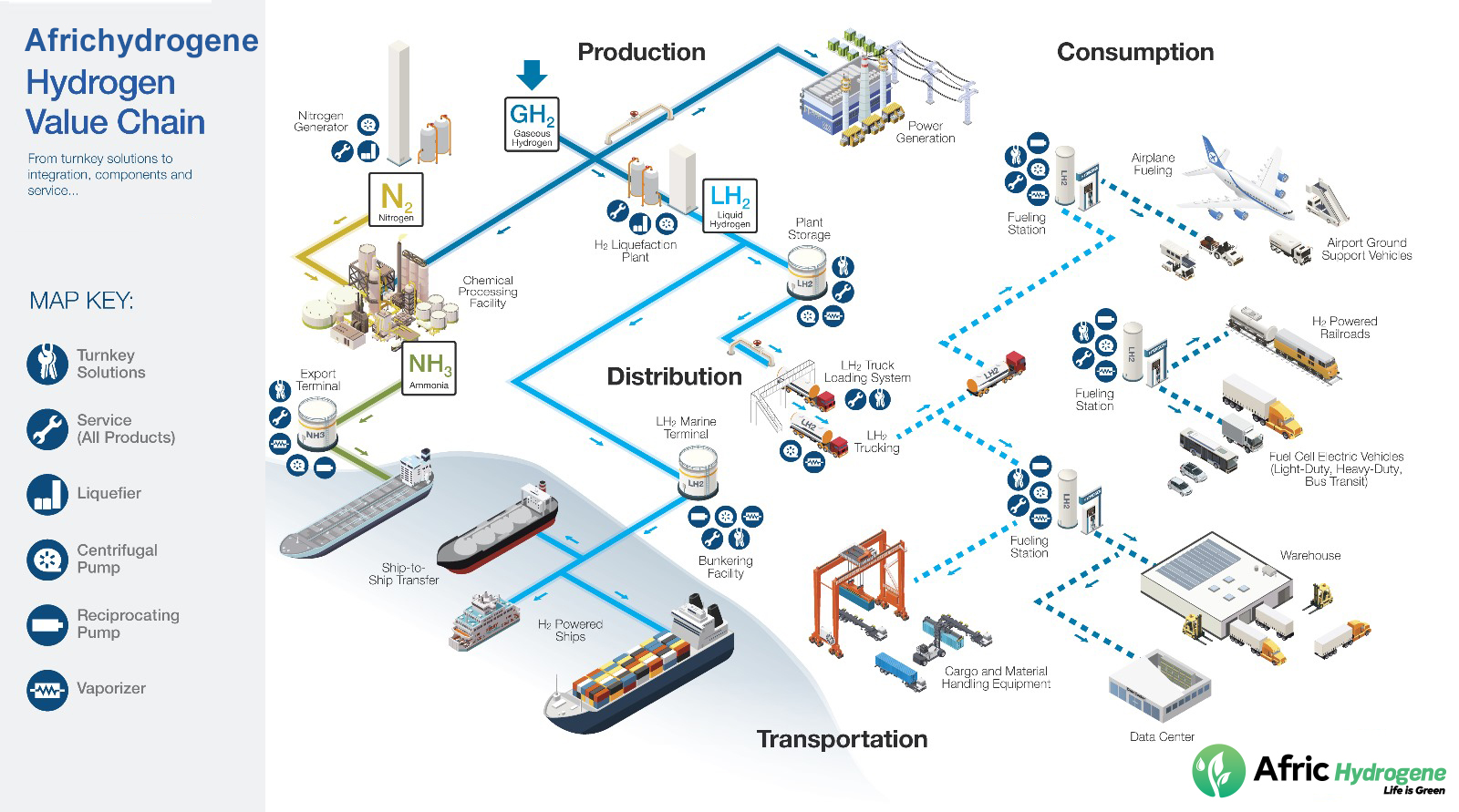Using green hydrogen for ammonia production is a sustainable alternative to the traditional ammonia production process, which typically relies on natural gas. Ammonia is a key ingredient in fertilizers and other industrial processes, but its production is highly energy-intensive and contributes significantly to CO₂ emissions. By integrating green hydrogen into ammonia synthesis, we can reduce the carbon footprint and move towards a more sustainable process.
Steps for Green Hydrogen-based Ammonia Production:
- Electrolysis to Produce Green Hydrogen:
- Green hydrogen is produced through water electrolysis, powered by renewable energy sources like solar, wind, or hydropower.
- The electrolysis process splits water (H₂O) into hydrogen (H₂) and oxygen (O₂) without producing CO₂, making it a clean source of hydrogen.
2 . Ammonia Synthesis (Haber-Bosch Process):
- The green hydrogen produced is then combined with nitrogen (N₂) from the air to produce ammonia (NH₃) through the Haber-Bosch process.
- The reaction is: N2+3H2→2NH3N_2 + 3H_2 \rightarrow 2NH_3N2+3H2→2NH3
- In traditional ammonia production, this process uses hydrogen derived from natural gas (a process known as steam methane reforming, or SMR), which releases CO₂. By using green hydrogen, the overall process becomes carbon-neutral.
3 . Benefits of Green Hydrogen in Ammonia Production:
- Reduction in CO₂ Emissions: By replacing fossil fuel-based hydrogen with green hydrogen, the ammonia production process emits significantly less CO₂.
- Sustainability: Green hydrogen is renewable, making it a key part of decarbonizing industries that are otherwise hard to electrify.
- Circular Economy: The process produces no waste CO₂, and green hydrogen can be produced locally, enhancing energy security..
4. Global Shift Toward Green Hydrogen:
- Governments and industries are increasingly focusing on green hydrogen as part of their decarbonization strategies. The European Union, for example, has outlined plans for a green hydrogen economy, which includes ammonia production using green hydrogen as a priority area.
Conclusion:
Using green hydrogen for ammonia production is a promising route to reducing the environmental impact of this vital industrial process. With advancements in renewable energy and electrolyzer technology, green hydrogen could play a significant role in making ammonia production more sustainable and less dependent on fossil fuels.

